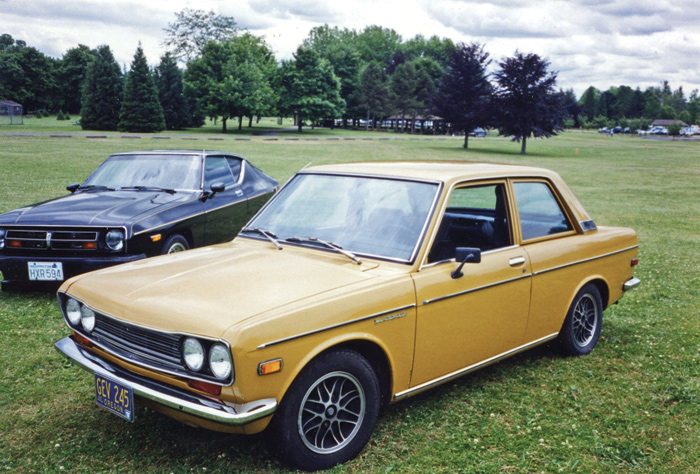When Datsun’s 510 came onto the scene late in 1968, it looked like Japan’s attempt at emulating the BMW 1600-2, which had debuted two years earlier.
Utilizing a 1600-cc SOHC engine and a drivetrain layout similar to the BMW, the Datsun offered technical sophistication and reliability that was nearly on par with its German competitor — but at a much lower cost. It was not as quick as the BMW in stock form — and it was not as good of a drive — but its price was roughly two-thirds that of the German, making it a compelling proposition.
In the United States, the 510 remained technically mostly the same during its five-year production run, with only minor model-year cosmetic differences. 510s were offered as 2- and 4-door sedans and as a station wagon. The sedans employed four-wheel independent suspension, while wagons had a live rear axle with leaf springs.
1968 model cars are the rarest, due to their introduction toward the end of the model year — and have trim differences, including different grilles and American-style instrument clusters with a sweep speedometer.
Cars from the 1969 model year retain many of the early design details. In 1970, Datsun introduced a round-gauge dashboard and headrests — not much else changed through 1972. In 1973 the 2-door was the only model offered, and 1973 cars sport rubber bumper overriders front and rear.
Some non-U.S. markets received performance-oriented twin-carbureted versions of the 510 (known worldwide as the Datsun 1600), and the home Japanese market was blessed with the sleek fastback Bluebird coupe. Unfortunately, these versions were never officially sold in the United States. However, in recent years, imports of Japanese vintage cars have been on the rise, and this means that a handful of Bluebird coupes have made their way to our shores.
